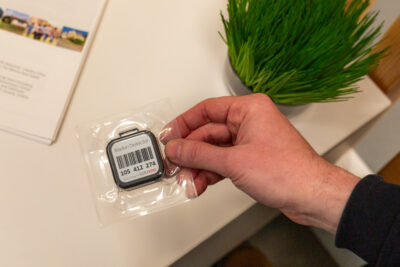How do I interpret my radon results?
Having completed your test, you should have received an email with your radon levels, 4-6 weeks after shipping the device back (if not check your junk folder!). It looks something like this:
Having completed your test, you should have received an email with your radon levels, 4-6 weeks after shipping the device back (if not check your junk folder!). It looks something like this:

Phew! Your radon levels are low and you can now breathe easy knowing, that in this house, you and your family are not at risk. Please note: Health Canada recommends retesting if a major home renovation takes place. Encourage a neighbour or friend to test their home for radon.
Tell a friend!Any radon level above 100 Bq/m³ represents a statistically significant increase in the lifetime relative risk of lung cancer for those being chronically exposed to it. The World Health Organization (WHO) deferred to the amount of radon where a statistically observable increase in lifetime risk of lung cancer is clear and significant – this is 100 Bq/m³. Health Canada set our “maximum exposure limit” at twice this value, with the view that double where we start to see an increase in risk is truly unacceptable.
To ensure that you are protected to where there is no significant increase in risk (as science and medicine understand radon), aim to get your home, school and work environment below 100 Bq/m³. It is important to remember that the 200 Bq/m³ level is set by Health Canada as a maximum exposure limit. Health Canada’s advice is to aim for as low as reasonably achievable. Your body cannot distinguish between 199, 200 and 201 Bq/m3 of radon, and being slightly under or over that number still has a measurable impact on your long-term health. Our advice if your home is above 100 Bq/m³ is to evaluate your relative risk and exposure by asking yourself the following questions:
CAUTION! Your radon test results are over the maximum exposure limit for Canada. At this level, you, your family, and especially your children are at risk of future radon-induced lung cancer. Our team and Health Canada highly recommend that you have your home mitigated by a C-NRPP professional. Don’t worry, in Canada, radon mitigation techniques are very effective.
What is radon mitigation? Find a C-NRPP professional in my areaRadon can be a scary topic, we completely understand. Not sure about your test results or how to move forward with a mitigation system? Email us, we’re happy to answer any of your questions.
Contact us
Are you sure you want to do this?
Join the Waitlist
TERMS AND CONDITIONS FOR PARTICIPATION IN THIS RESEARCH:
Research Consent
|
No Results
|
|
No Results
|